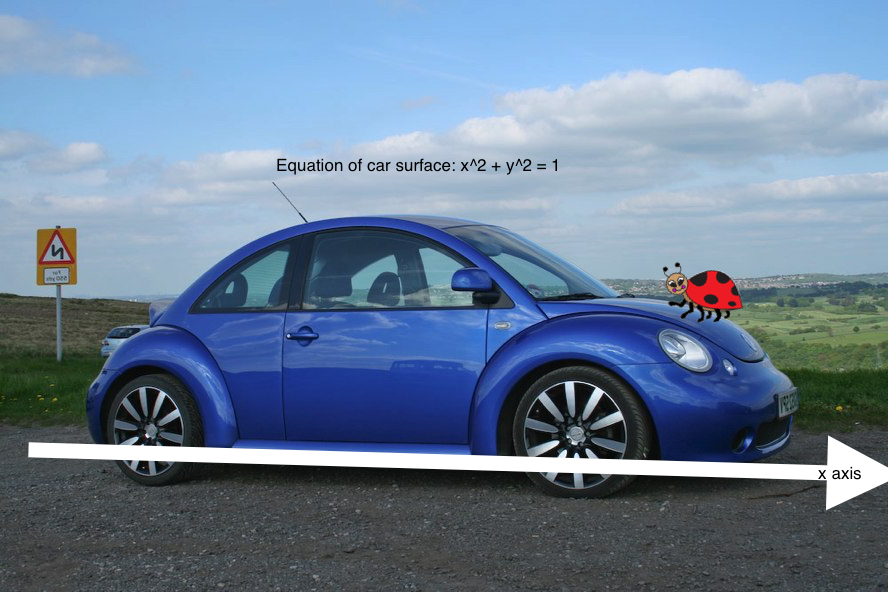I Wish The Car Stayed Still

A ladybug is climbing on a Volkswagen Beetle (a type of car). In its starting position, the surface of the car is represented by the unit semicircle in the -plane. The -axis is the road. At time the ladybug starts at the front bumper , and crawls counterclockwise on the surface of the car at a unit speed relative to the car. At the same time, the car moves to the right at speed 10.
If the speed of the bug at can be represented as , find .
Credit : Problem information is adapted from MIT OCW.
The answer is 93.
This section requires Javascript.
You are seeing this because something didn't load right. We suggest you, (a) try
refreshing the page, (b) enabling javascript if it is disabled on your browser and,
finally, (c)
loading the
non-javascript version of this page
. We're sorry about the hassle.
You can represent the ladybug's position as a vector. You can decompose that vector into two vectors: one vector that connects the origin and the midpoint of diameter on the x -axis on the Volkswagen Beetle, and another that connects the aforementioned midpoint and the ladybug's position.
The vector connecting the origin and aforementioned midpoint is ⟨ 1 0 t , 0 ⟩ because it is mentioned that its speed is 10. The vector connecting aforementioned midpoint and the ladybug's position is ⟨ cos t , sin t ⟩ because it's a unit semicircle. Adding the vectors together to get the vector giving the ladybug's position gives ⟨ 1 0 t + cos t , sin t ⟩ .
Let's call the vector that gives the ladybug's position L . Then , d t d L = ⟨ 1 0 − sin t , cos t ⟩ . But that's a velocity vector. The speed has to be a scalar, which is consequently ∣ ∣ ∣ ∣ ∣ ∣ ∣ ∣ ∣ ∣ d t d L ∣ ∣ ∣ ∣ ∣ ∣ ∣ ∣ ∣ ∣ , or the norm of the velocity vector, which is ( 1 0 − sin t ) 2 + cos 2 t . Let's denote speed as d t d S = 1 0 1 − 2 0 sin t .
We wanted to know the speed at time t = 4 π , so d t d S ∣ ∣ ∣ ∣ t = 4 π = 1 0 1 − 2 0 sin 4 π .
Finally, the problem statement asks for the floor of 10 times the speed at t = 4 π , which turns out to be 9 3 .